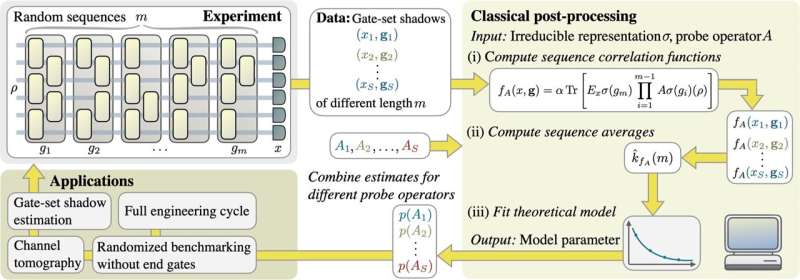This article has been reviewed according to Science X's editorial process and policies. Editors have highlighted the following attributes while ensuring the content's credibility:
fact-checked
peer-reviewed publication
proofread
Physicists develop series of quality control tests for quantum computers

Quantum technologies—and quantum computers in particular—have the potential to shape the development of technology in the future. Scientists believe that quantum computers will help them solve problems that even the fastest supercomputers are unable to handle yet. Large international IT companies and countries like the United States and China have been making significant investments in the development of this technology. But because quantum computers are based on different laws of physics than conventional computers, laptops, and smartphones, they are more susceptible to malfunction.
An interdisciplinary research team led by Professor Jens Eisert, a physicist at Freie Universität Berlin, has now found ways of testing the quality of quantum computers. Their study on the subject was recently published in the scientific journal Nature Communications. These scientific quality control tests incorporate methods from physics, computer science, and mathematics.
Quantum physicist at Freie Universität Berlin and author of the study, Professor Jens Eisert, explains the science behind the research. "Quantum computers work on the basis of quantum mechanical laws of physics, in which individual atoms or ions are used as computational units—or to put it another way—controlled, minuscule physical systems. What is extraordinary about these computers of the future is that at this level, nature functions extremely and radically differently from our everyday experience of the world and how we know and perceive it."
But quantum computers have one major weakness: "They are hyper sensitive when it comes to sources of interference. If a quantum computer is not sufficiently shielded from its environment, then the properties responsible for its computational power disappear. The 'quantum advantages,' as we call them, tend to dissipate. In other words, it just won't work," he adds.
This conundrum poses an important question for researchers: How can you even know whether a quantum circuit has worked properly? Just like tests to prove a vehicle is roadworthy and safe to drive, processes that put the quality of quantum circuits to the test are needed. "Without these methods you'll get results through quantum computing, but you won't know how reliable they really are," Eisert says.
An interdisciplinary research team with members from Freie Universität Berlin, the Helmholtz-Zentrum Berlin, the Heinrich Hertz Institute, QuSoft in Amsterdam, the Quantum Research Center in Abu Dhabi, QMath in Copenhagen, and the Technical University of Munich has now found ways of testing the quality of quantum computers. "The method is as simple as it is astonishing: Random circuits are implemented and then the measurement results are output in 'quantum bits' or 'qubits,' which is what we call the basic unit of quantum information," Eisert explains.
These data provide a whole host of diagnostic information that can be used, for example, to find out how well quantum gates work, if there are any interference factors, or whether certain parts interact with each other unintentionally.
"If we stick with the metaphor of sending your car for a maintenance check, it's like randomly going over the outside of the car several times with a cloth in a few swift movements, while also finding out at the same time whether the engine works, if there's washer fluid in the windshield wiper, and whether or not the brakes are properly adjusted. All these processes are rolled into the same measurement, which means that the full range of diagnostics is actually carried out in one fell swoop," Eisert says.
It is expected that this research will serve as the basis for a new method of verification so that future quantum computers for technological devices will have real economic and scientific benefits.
More information: J. Helsen et al, Shadow estimation of gate-set properties from random sequences, Nature Communications (2023). DOI: 10.1038/s41467-023-39382-9
Journal information: Nature Communications
Provided by Freie Universität Berlin





















